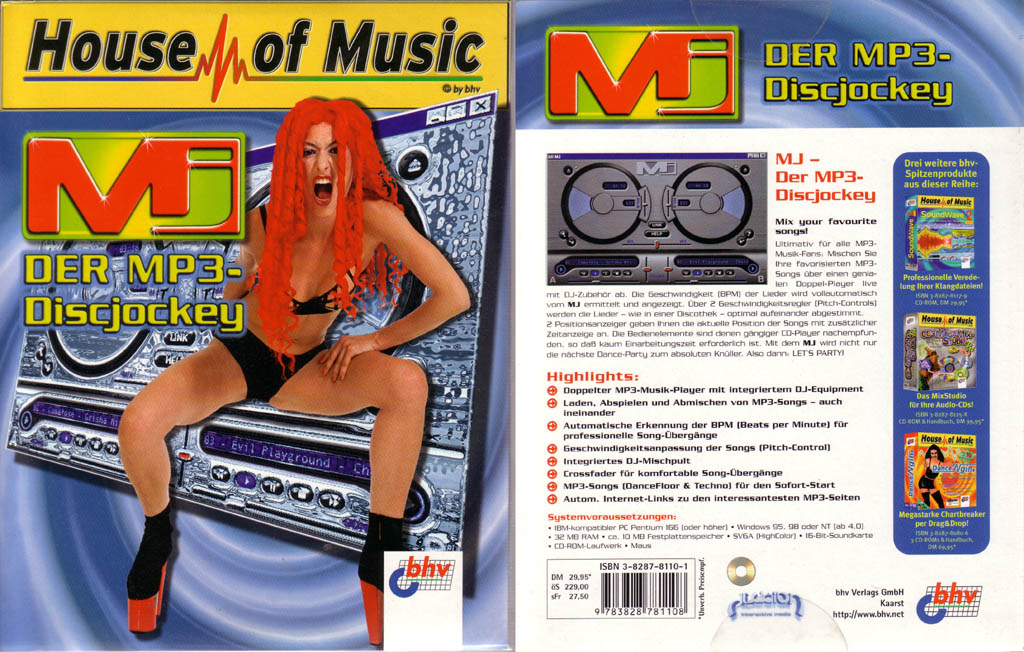D-lusion Mj Studio
D'lusion art gallery & creative artist agency. Artists; gallery; press; contact. D-lusion GROOVE - Drum Station DT-010. Flanger effect in MJ STUDIO - Duration. Installing Laminate Flooring Under Door Trim. D-lusion Rubberduck VST TB-303 Software Synthesizer.


Windows Xp Home Edition Pt-pt 32 Bits. To adjust MJ Studio to your needs you can do some fine tuning in the preferences dialog which is located in the system menu. Autosave/load last playlist if enabled, MJ Studio will save the playlist when leaving and reload it the next time you start MJ Studio.
Recursively add directories if enabled, MJ Studio will browse through all subdirectories and will add all mp3s found there. Docking behaviour if enabled, moving MJ Studio will also move the playlist. Automix time specify the number of seconds, MJ Studio will take if the function is enabled.
Volume settings/monitor choose the appropriate volume for the monitor output here. An audio doohicky is nothing more than a channel splitter. It splits your stereo signal from your soundcard into two mono signals. Now you can attach one signal to your home stereo to drive the party and the other one to your headphones to monitor your mix and to finetune some parameters (e.g. Match the tempo of both songs to sync perfectly) before you let your audience listen your mix. The doohicky should be available in any good electronic stores (at this is part #274-375B). The plugs come in different flavours, be sure to get one with the correct wiring.
The stereo signal should be splitted into 2 independent mono-signals, but wired to a stereo output connector. Or with a little soldering experience you can build your own plug, here is the wiring diagram: note: the mono channel is connected to both channels of the stereo output connector, be sure to use stereo connectors or you will damage your hardware. By the way, we hearby take no liability and are not responsible for any damage. The main display consists of two areas: in the upper half of the screen you can see the two mp3 decks. The lower half of the screen is dedicated to control elements like volume, position etc.
Soundcard setup, about dialog and more can be reached in the window control by clicking on the icon in the upper left corner of the MJ Studio window. The following section will explain all elements that are visible in the MJ Studio window: mp3 decks the two mp3 decks are located in the upper part of the window. Both can play a 128 bit 44 khz mp3 file.
Each deck has the following controls (text in brackets are for the specified function): load button the load button looks like the typical eject button on your cd or tape player. Click here to load a new song into the deck. Time display displays the remaining time for the file being played in the upper part of the deck. Bpm display displays the detected bpm (beats per minute) in the lower part of the deck. This is quite a useful tool for matching both decks on the same speed. Kayak Ruthless Queen. Remark: reliable bpm detection is quite a difficult job.
The algorithm used in MJ Studio is far from being perfect. We found it to be quite reliable on house music and other straight beat stuff.
But don't expect it to work on breakbeat, jungle and trash-metal. Pitch slider (arrow up/down) each deck has its own pitch slider that alters the speed from 50% to 200%. By clicking with the right mouse button, the slider automatically jumps back to 100%. '+', '-' buttons these buttons increment (+) or decrement (-) the current pitch of the deck. Use these buttons to do some fine tuning you couldn't achieve with the pitch slider.
'=' buttons use this button to set the pitch of the deck to match the bpm settings. Example: deck a and deck b are playing, but by pushing the cross-fader to the right or by selecting the b-button your audience is listening to the song of deck b. Now press the '=' button on deck a to set the pitch of deck a so that deck a will play with the same beat (bpm) as deck b. Now, all you have to do (supposed the beat detection worked fine) is to nudge deck a forward/backward in order to synchronize the beats of your songs. Nudge buttons (numeric */numeric /) the nudge buttons are located below each deck.
Their purpose is to jump a little forward or backward in a track that has the right speed, but the wrong offset to eleminate that nasty double bassdrums. , the deck hold button (numeric delete) this button has the same effect as stopping a turntable with the hand.
The deck will slow down and then stop playing when you click the button with the mouse. As soon as you release the mouse button from its pressed state, the deck will start to play like before.
Equalizer (insert, delete, home, end, pgup, pgdown) a simple but efficient to use 3-band equalizer. Deck scratching positioned above the equalizer (the cds). Click it and move your mouse to do some scratching with your songs.